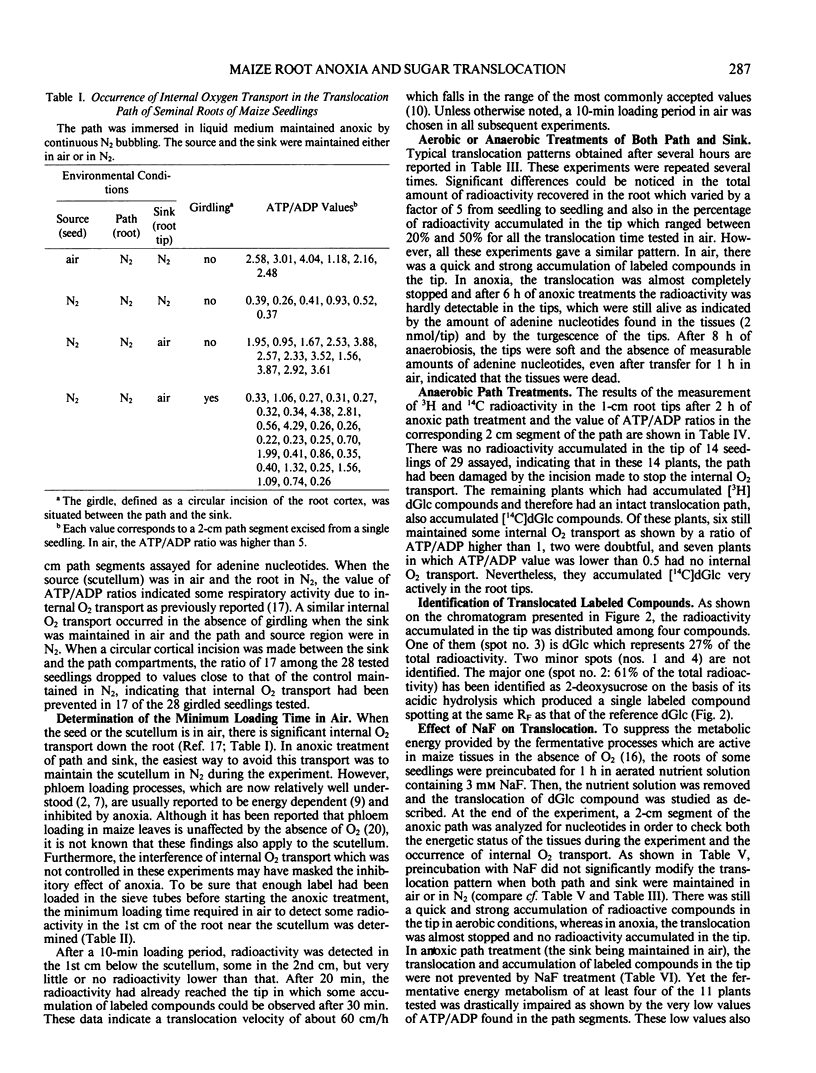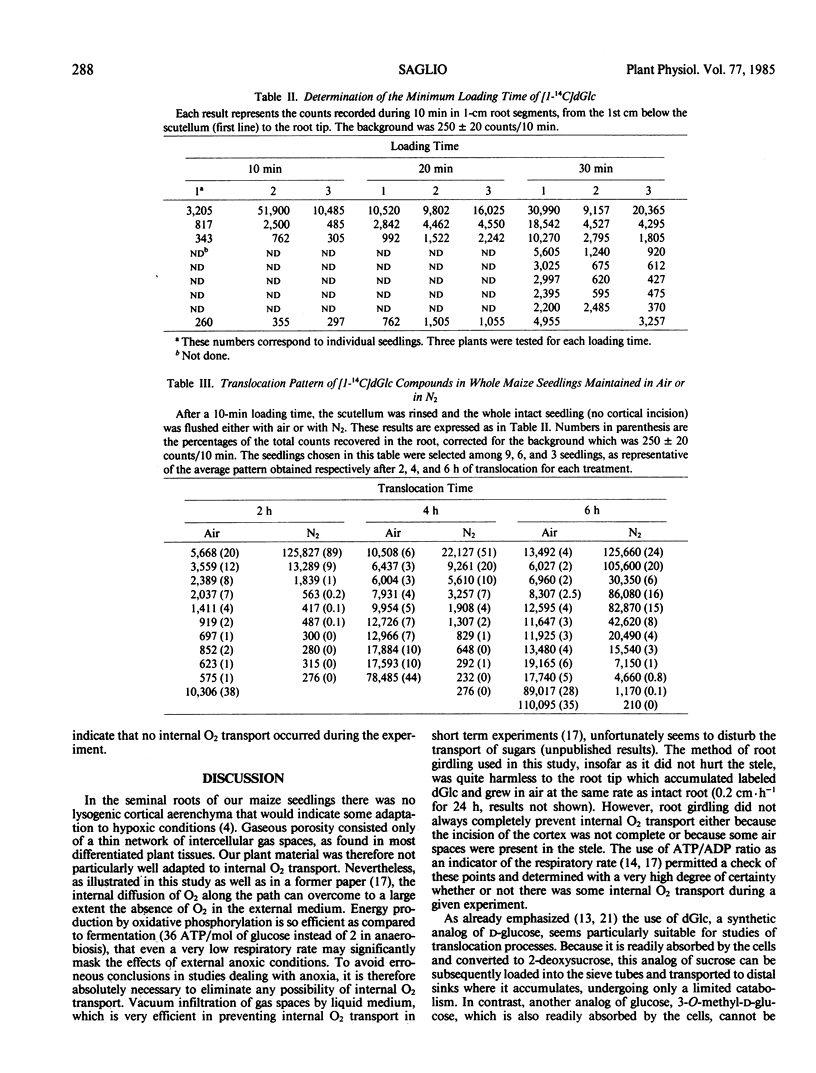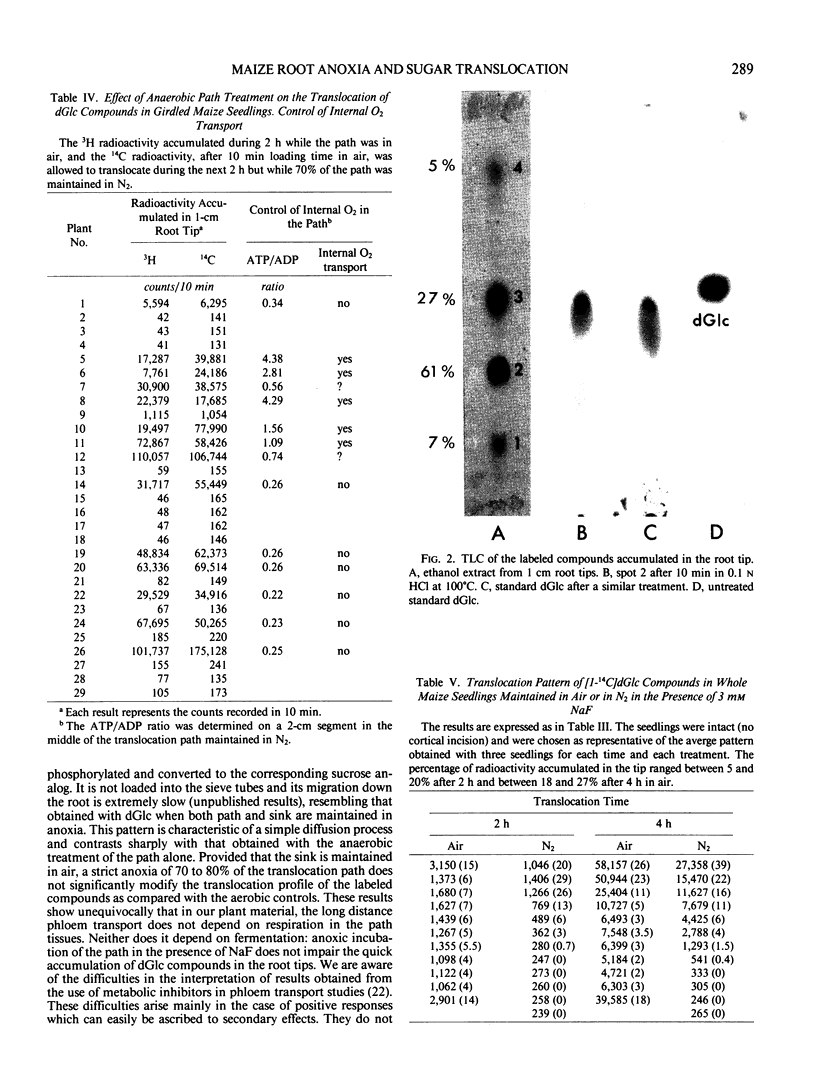Abstract
After feeding the scutellum of young maize seedlings with a labeled analog of glucose, 2-deoxy-d-glucose, the progress of radioactivity along the root was followed when either 70% of the path or the whole root were in strict anoxic conditions, and was compared with the translocation pattern of aerobic seedlings. Special care was taken to suppress the internal O2 transport and to control its occurrence.
In air, the radioactive compounds accumulated from 30 minutes in the root tip mainly as an analog of sucrose. When the whole root was anoxic, the progress of the radioactivity was very slow and never reached the tip which did not survive more than 8 hours. When 70% of the path was in strict anoxia and the sink (root tip) in air, the translocation was not impaired and the radioactivity accumulated in the tips as fast as in aerobic controls. The addition of 3 millimolar NaF, which inhibits the fermentative energy production, did not modify these results. It is concluded that long distance transport in maize sieve tubes has no special energy requirements and is controlled by source-sink relationships. The inhibition of sugar supply in anoxic root tips is attributed to an effect on unloading processes rather than on sink metabolism.
Full text
PDF





Images in this article
Selected References
These references are in PubMed. This may not be the complete list of references from this article.
- Delrot S. Proton Fluxes Associated with Sugar Uptake in Vicia faba Leaf Tissues. Plant Physiol. 1981 Sep;68(3):706–711. doi: 10.1104/pp.68.3.706. [DOI] [PMC free article] [PubMed] [Google Scholar]
- Giaquinta R. T., Lin W., Sadler N. L., Franceschi V. R. Pathway of Phloem unloading of sucrose in corn roots. Plant Physiol. 1983 Jun;72(2):362–367. doi: 10.1104/pp.72.2.362. [DOI] [PMC free article] [PubMed] [Google Scholar]
- Saglio P. H., Pradet A. Soluble Sugars, Respiration, and Energy Charge during Aging of Excised Maize Root Tips. Plant Physiol. 1980 Sep;66(3):516–519. doi: 10.1104/pp.66.3.516. [DOI] [PMC free article] [PubMed] [Google Scholar]
- Saglio P. H., Raymond P., Pradet A. Metabolic Activity and Energy Charge of Excised Maize Root Tips under Anoxia: CONTROL BY SOLUBLE SUGARS. Plant Physiol. 1980 Dec;66(6):1053–1057. doi: 10.1104/pp.66.6.1053. [DOI] [PMC free article] [PubMed] [Google Scholar]
- Saglio P. H., Raymond P., Pradet A. Oxygen Transport and Root Respiration of Maize Seedlings: A Quantitative Approach Using the Correlation between ATP/ADP and the Respiration Rate Controlled by Oxygen Tension. Plant Physiol. 1983 Aug;72(4):1035–1039. doi: 10.1104/pp.72.4.1035. [DOI] [PMC free article] [PubMed] [Google Scholar]
- Sij J. W., Swanson C. A. Effect of petiole anoxia on Phloem transport in squash. Plant Physiol. 1973 Feb;51(2):368–371. doi: 10.1104/pp.51.2.368. [DOI] [PMC free article] [PubMed] [Google Scholar]
- Thorne J. H. Temperature and oxygen effects on C-photosynthate unloading and accumulation in developing soybean seeds. Plant Physiol. 1982 Jan;69(1):48–53. doi: 10.1104/pp.69.1.48. [DOI] [PMC free article] [PubMed] [Google Scholar]



